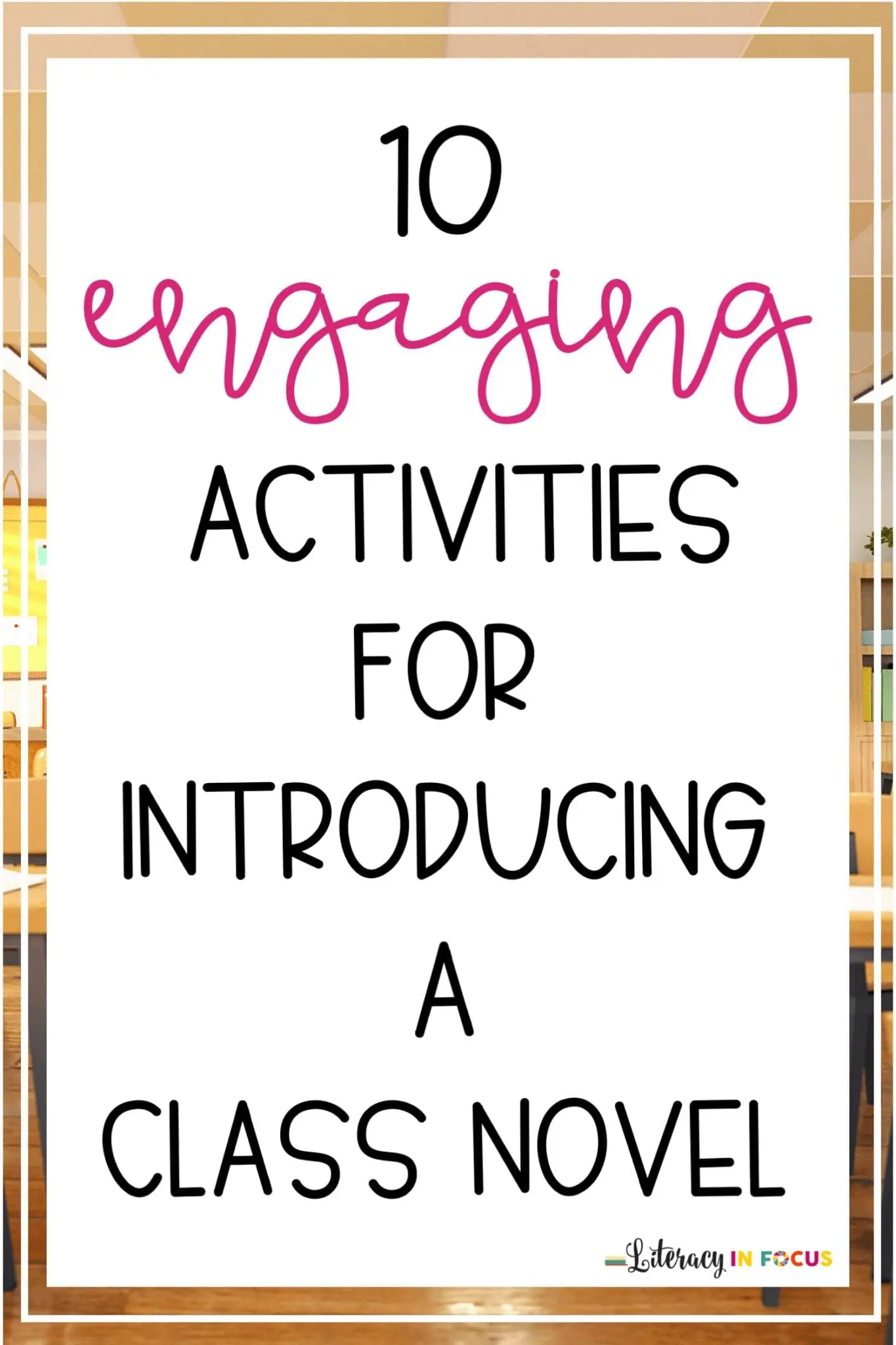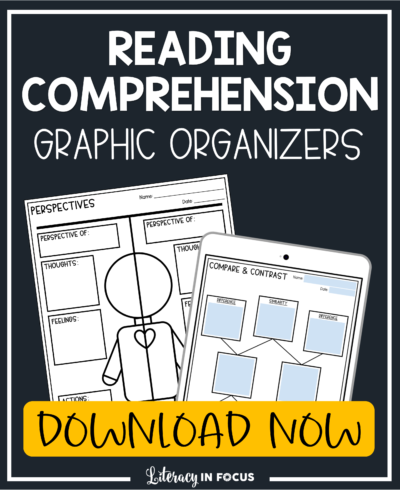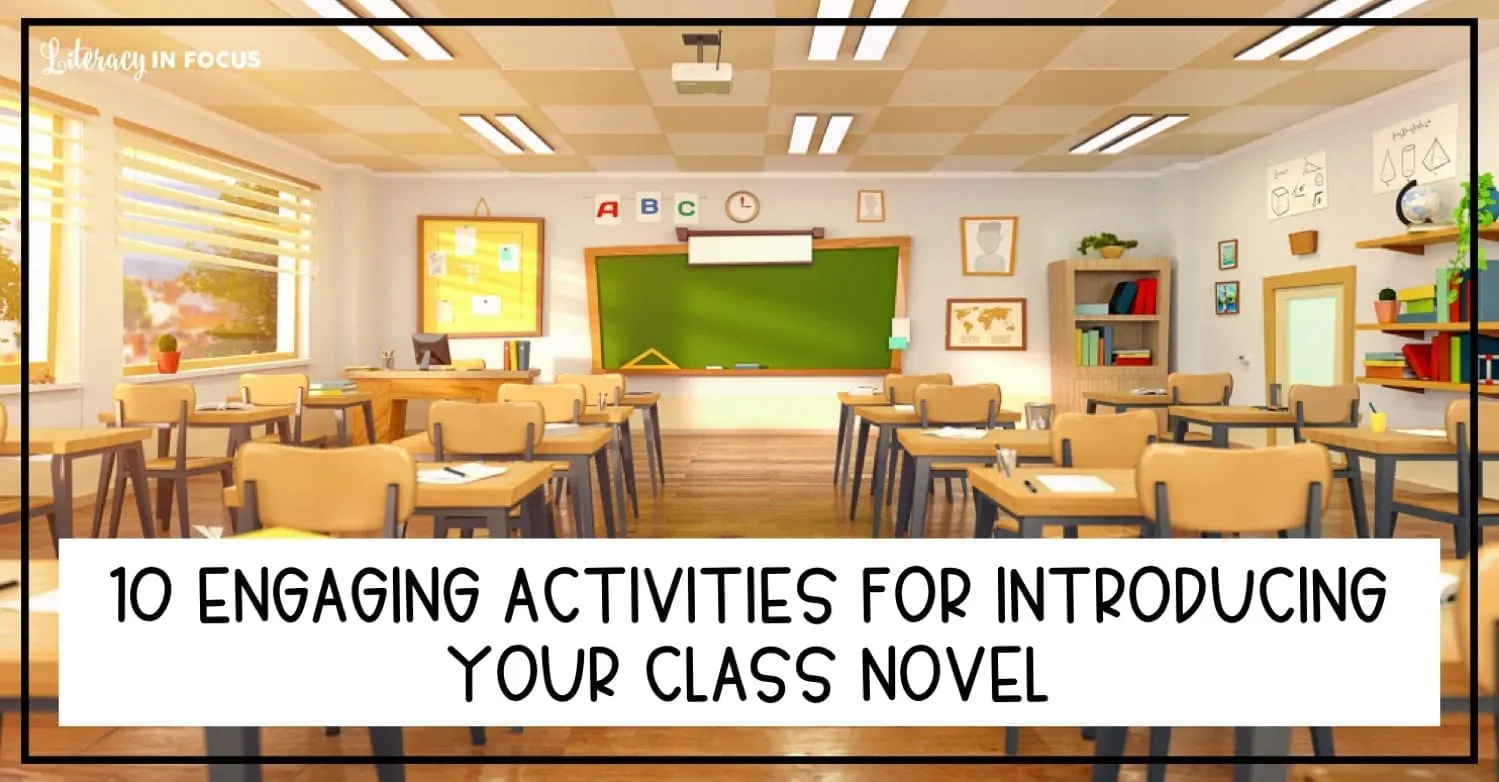
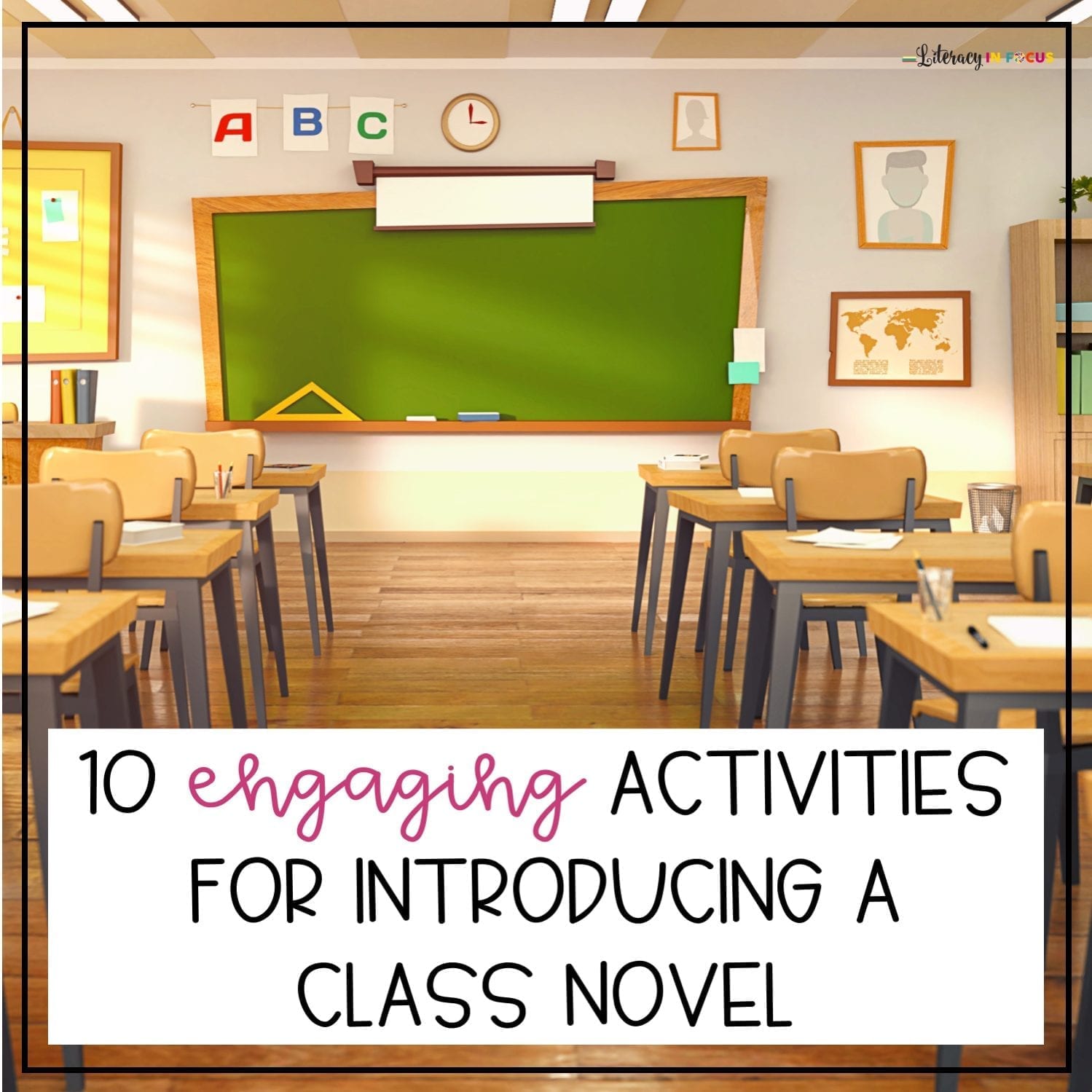
Getting students excited about reading the next class novel is easier said than done. We have one chance to make a great first impression, so let’s make the most of it with engaging activities that will spark curiosity and generate enthusiasm for reading! The ten activities explained below are designed to hook your students before they read the first page. You can skip around and try different approaches, or you can stick with what works and use the same activity each time you start a new book.
Symbolism Suitcase
Introduce your next class novel while reinforcing symbolism and inference skills. Fill a suitcase with items that are found in the text. Make sure to choose items with strong symbolism. You want students to be able to draw meaning from each item and infer its relation to the text. Pictures will also work if you can’t find all of the tangible items you want to add to your suitcase. Give students time to examine the objects and make inferences as to what the novel might be about. When students make the deeper connections required of this activity, they are activating their critical thinking skills. As teachers, we love engaging ideas that won’t break the bank. This is just that – a perfect combination of learning and fun, designed to pique curiosity and inspire deeper thinking. The symbolism suitcase shown below was used to introduce the book Hatchet by Gary Paulsen.
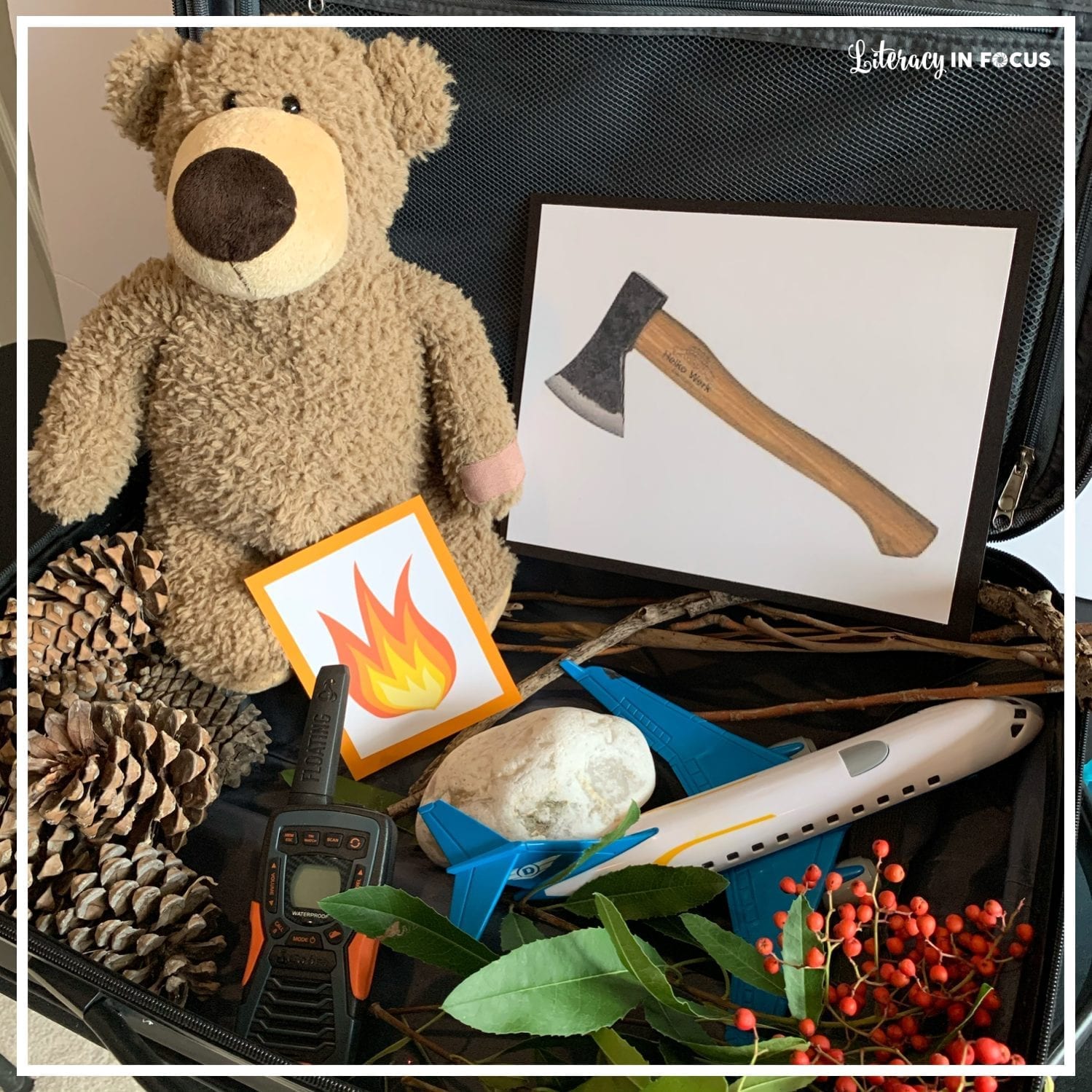
Gallery Walk
Inviting students to walk around the room and analyze photographs, artwork, and/or artifacts is an engaging way to introduce the topic of your next class novel. The gallery pieces should reflect the novel and encourage critical thinking about the subject matter. It is also important that questions or writing prompts accompany each piece, giving students a sense of direction in terms of their analysis. Teacher tip: If at all possible, provide students with clipboards (I like these because they double as individual student whiteboards) to utilize as they move throughout the room reflecting on each picture or artifact during the gallery walk. Also, structuring the gallery walk is important. Starting students at specific locations and using a timer to set rotation limits works well.
Vocabulary Predictions
Have fun with word work! Students will love the freedom and creativity that comes with this activity. First, choose a handful of tier two and tier three words from the novel for students to explore. Recording definitions, finding synonyms, crafting original sentences, and drawing pictures to represent meaning are all relevant activities for working with the new set of words. Next, encourage students to predict what the novel is about based on the denotative meanings of the vocabulary words. Examining powerful words from the novel will provide your students with a strong foundation for understanding the novel’s integral elements such as theme, plot, conflict, and setting.
Pre-Reading Stations
Introduce your next novel with learning stations. This cooperative learning activity gets students up, moving, and interested in the book they are about to read. Your students will move through five different pre-reading stations, exploring a different aspect of the text at each station. The stations topics are listed below.
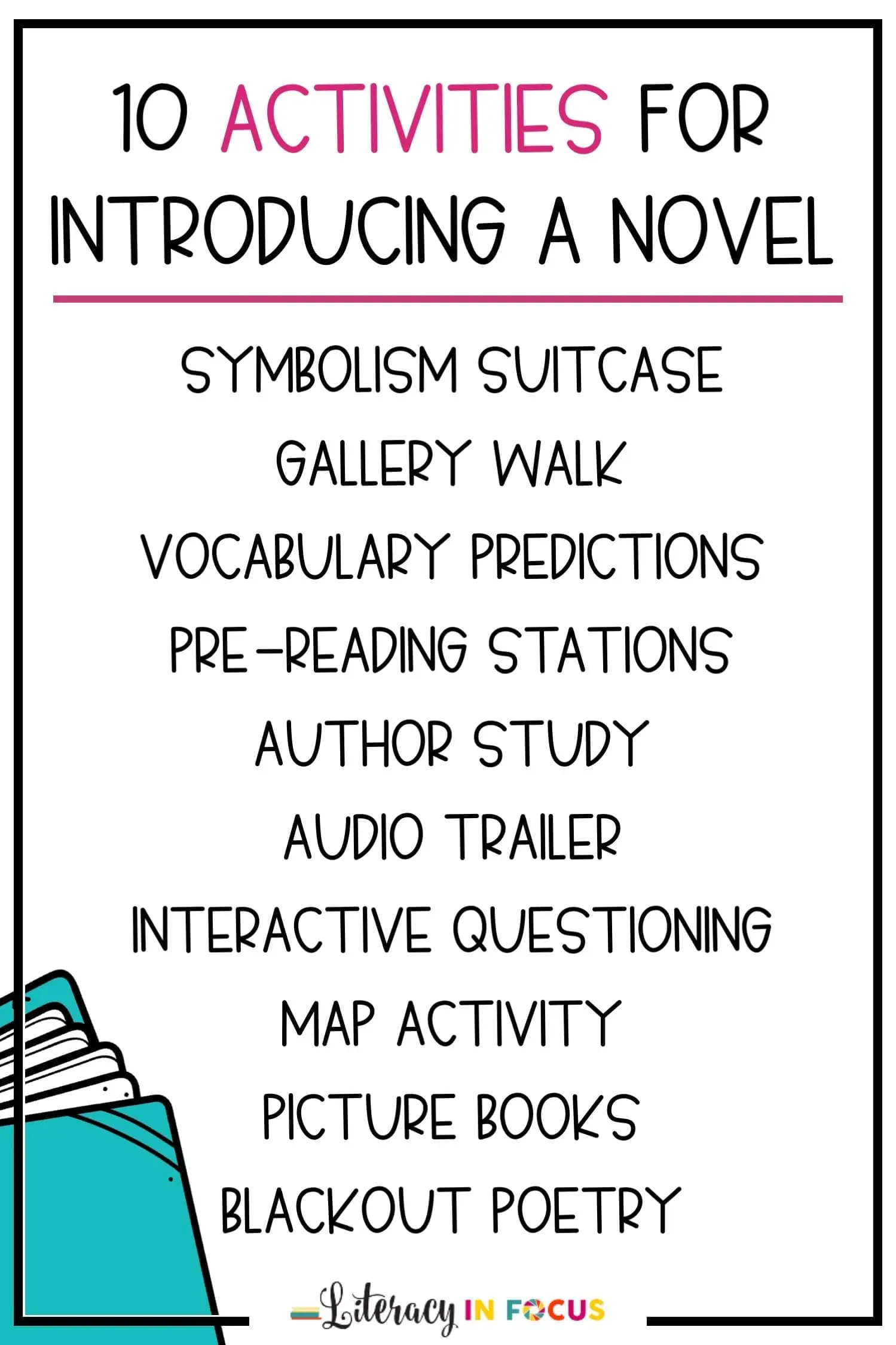
Preview: Students examine the title and cover art of the text. Based on their observations, students record what they believe the book is about.
Identify: Students focus on the author and the publication date of the text. Encourage students to think about other works by the same author, and anything that might be relevant to the year the book was published.
Predict: At this station students analyze the genre, organization, and table of contents to predict the book’s subject matter and possible plot lines.
Summarize: Students take a moment to read the summary of the text on the back or inside cover of the book. Based on the summary reading, students record answers to the 5Ws (Who, What, When, Where, and Why).
Connect: This station gives students an opportunity to personally connect with the topic or subject matter.
Station activities are engaging because they break routine and give students a chance to get up and move around. Save time and download everything you need to implement pre-reading stations in your classroom from Literacy in Focus on TpT. Station posters and a student response page are included!
Novel Study Pre-Reading Station Activity from Literacy in Focus on TpT
“I will use this every time I start a new novel from now on! It was a great way to get the students interested and eager to start the novel. Great product!” -Jamie W.
Author Study
Go behind the scenes with an author study. This is especially helpful when it comes time to examine and identify the author’s purpose for writing. Ideas for an author study include:
- Closely read an author biography. Set up the close reading to focus on meaningful moments in the author’s life that may be contributing factors to his or her work.
- Watch or read an author interview. Have students generate five additional interview questions. Then, with a partner, students can ask and answer each other’s questions.
- Create an illustrated timeline of the author’s life. This is a particularly meaningful activity if the novel contains parallels to the author’s life.
- Examine other works by the author. This will give students a better idea of the themes and topics the author includes in their works. You can simply read short excerpts from several of the authors works and have students try and make connections between each text.
Audio Trailer
Create excitement and build suspense by letting students listen to the first chapter or first few pages of the new book. It works particularly well if students don’t have the text in front of them, making them rely solely on their listening skills. If an audio book isn’t an option, you can record your voice and play the recording for your students. They will love hearing your expressions and interpretations of the character voices. Extend the activity by having students predict what happens next.
Interactive Questioning
Introduce your next class novel with a modified version of a K-W-L chart. First, draw a question mark on a large piece of paper. After sharing the topic and background information of the book with students, have them write down one relevant question on a sticky note. Have students place their sticky notes on the question mark poster. You can use the questions to generate discussion, but hold off on answering them. When students have finished reading the novel, review the questions students placed on the question mark poster. Then, on another piece of large paper, draw a lightbulb. Once again, pass out sticky notes for students to write the answer to their question or another classmate’s question. After recording their answers, students can place their sticky note on the lightbulb poster. The sticky notes placed on the question mark and the lightbulb work extremely well for generating class discussions and can even be used to help structure a Socratic seminar.
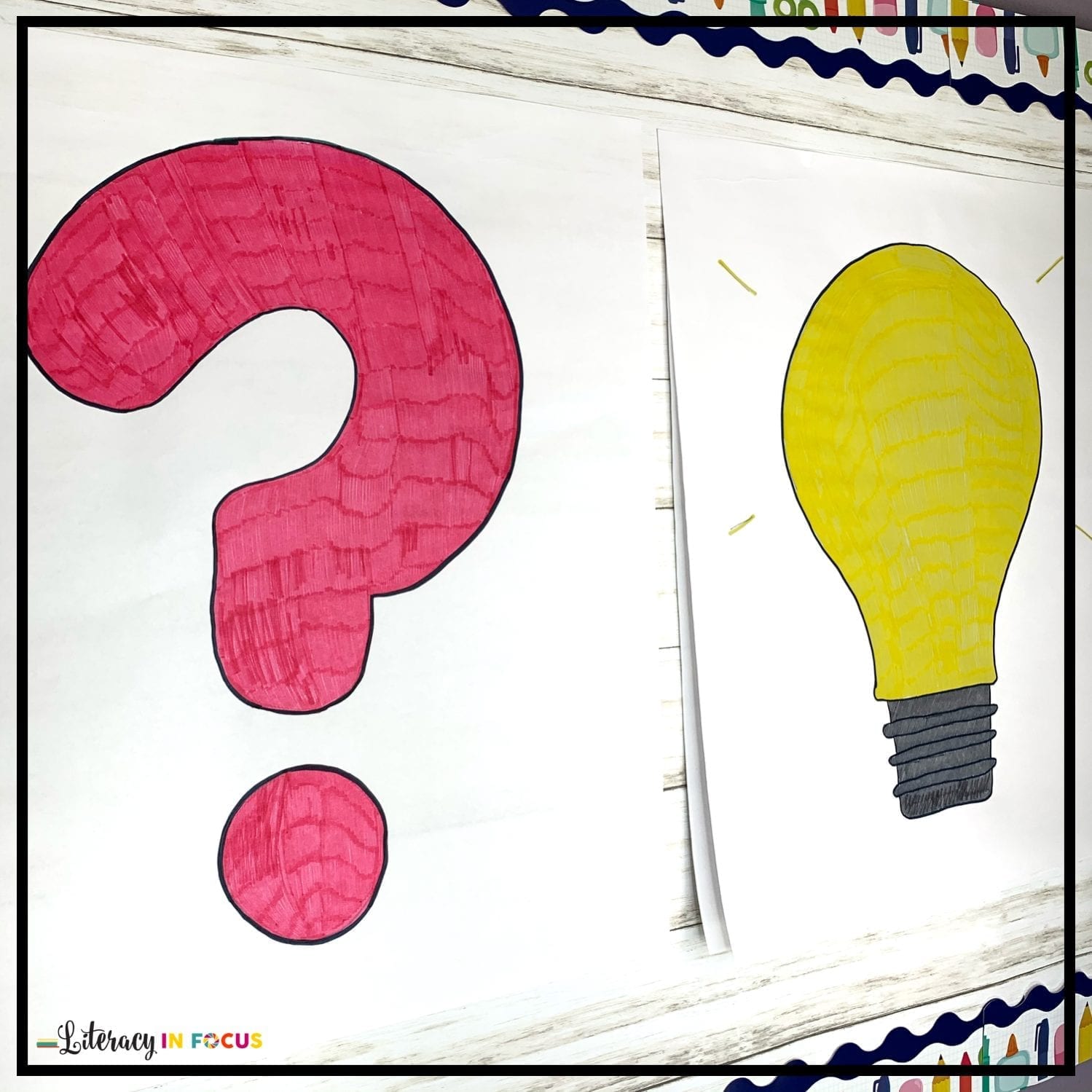
Map Activity
Incorporating map activities into your instruction encourages critical thinking and increases engagement. Why not dive into the novel’s setting with a hands-on map activity? If the novel takes place in a real location, students can research the area to create their own maps. If the setting is in a fictional location, it will give the students a chance to get creative with their maps. Either way, students will be thinking critically and making connections with the novel’s setting.
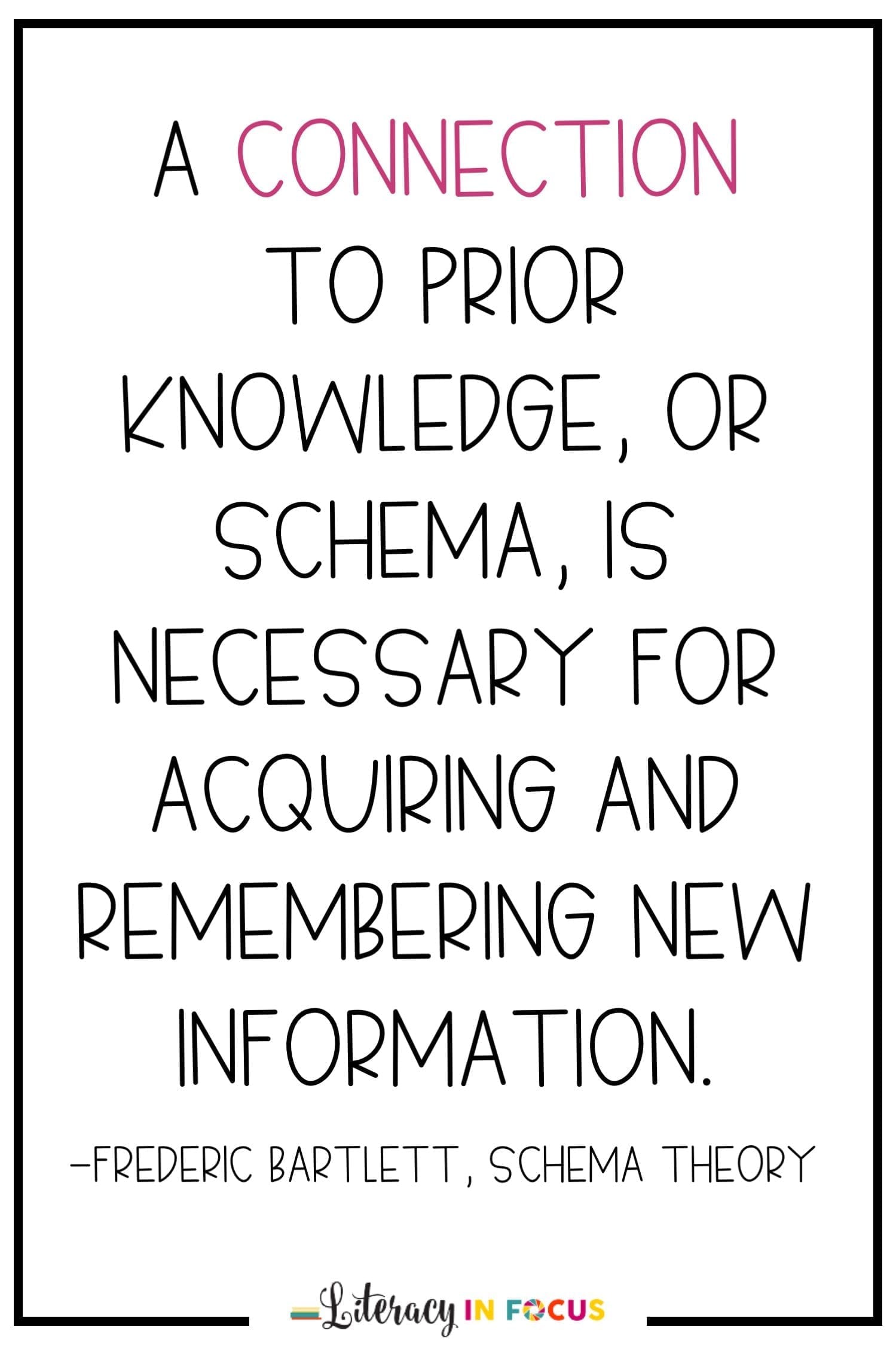
Picture Books
Use picture books to build schema before jumping into the novel. When students are able to make connections with the text, their comprehension increases. Using picture books to build prior knowledge will enable students to make authentic connections as they read the novel. Focusing on theme, character types, conflict, or historical setting are great places to start. When students are able to make connections from their experience to the text they are reading, they have a foundation upon which they can place new facts, ideas, and concepts.
Blackout Poetry
Playing with and exploring language is a dynamic tool you can use to build interest in the new book. Combine visual art with words, appeal to all types of learners, and inspire curiosity using blackout poetry. Blackout poetry is when a poet takes a piece of text and blacks out existing words until the remaining words create a poem. The power is in the simplicity. Give your students a chunk of text from the novel and a black marker and let them go to work! If you have a large class, you can vary the end results by giving students different excerpts. After students have created their poems, they can add artistic elements to the page, making their poem even more unique. When students are finished, host an “open mic” activity and invite students to share their creations.
All ten ideas listed above are designed to get your students interested in what they are about to read. If one of the activities listed above works particularly well with your students, stick with it! You can use it to introduce all different types of texts. If we can spark curiosity and provide students with the tools they need to have a successful reading experience, we’ve won.
This post contains affiliate links. Click here to read my affiliate policy.
